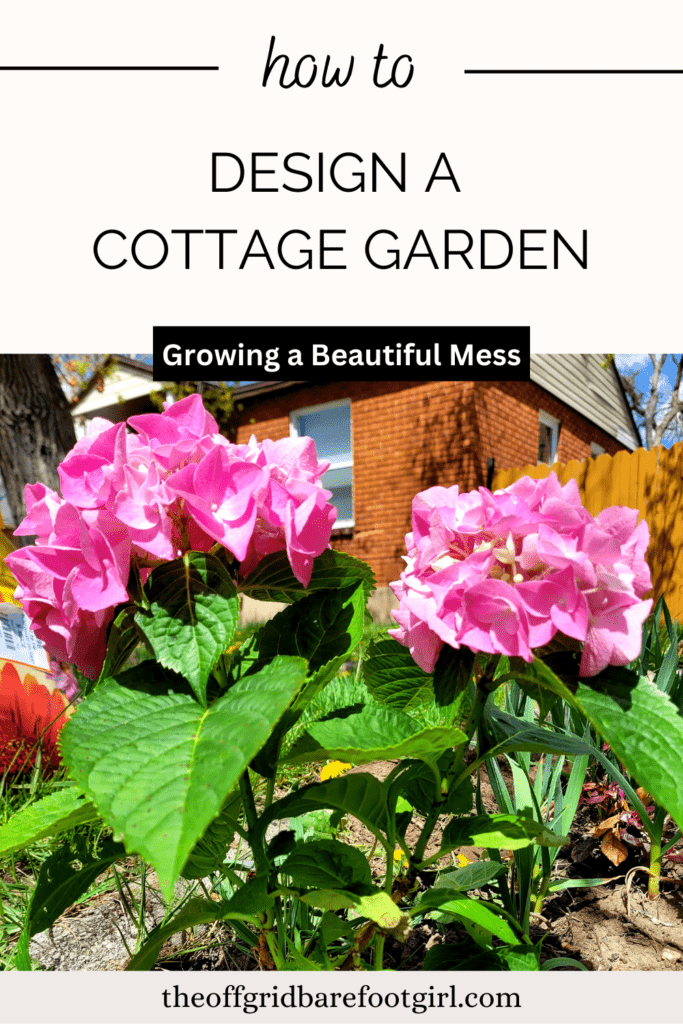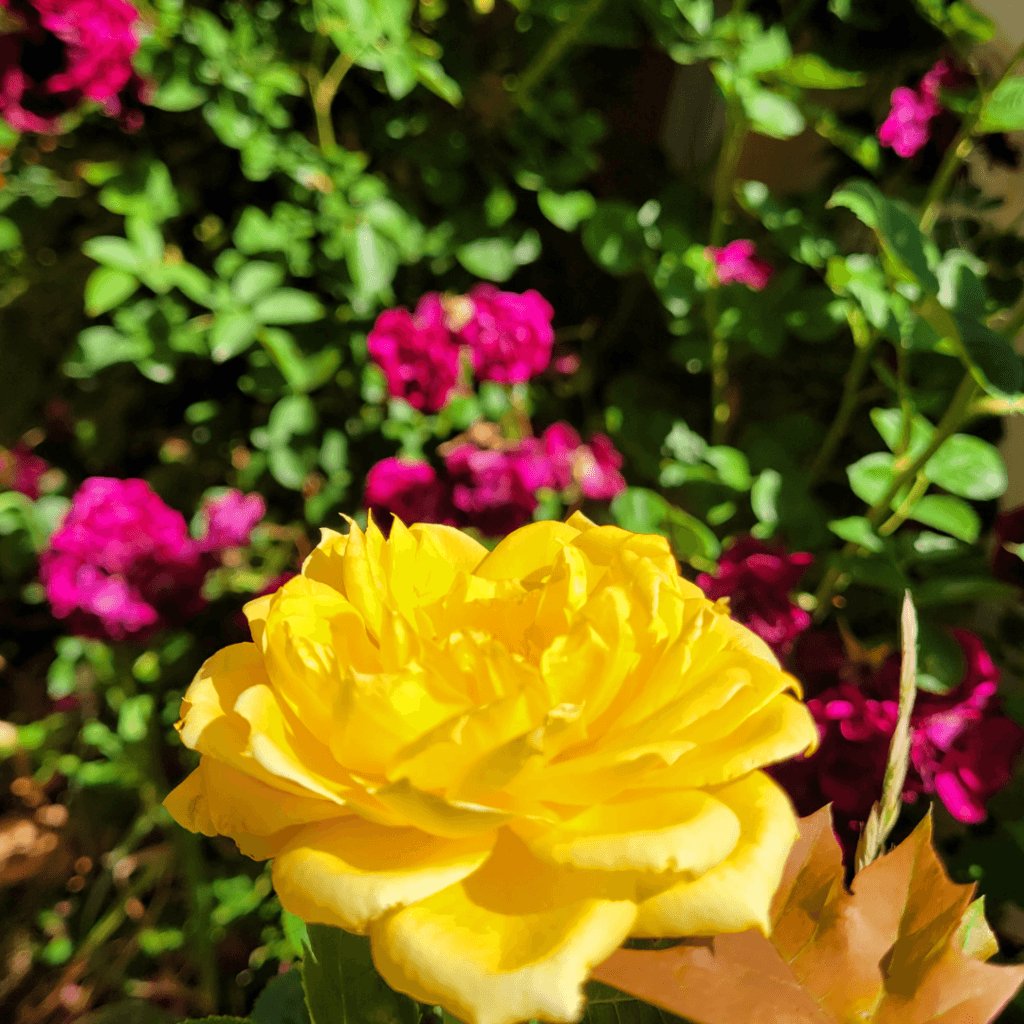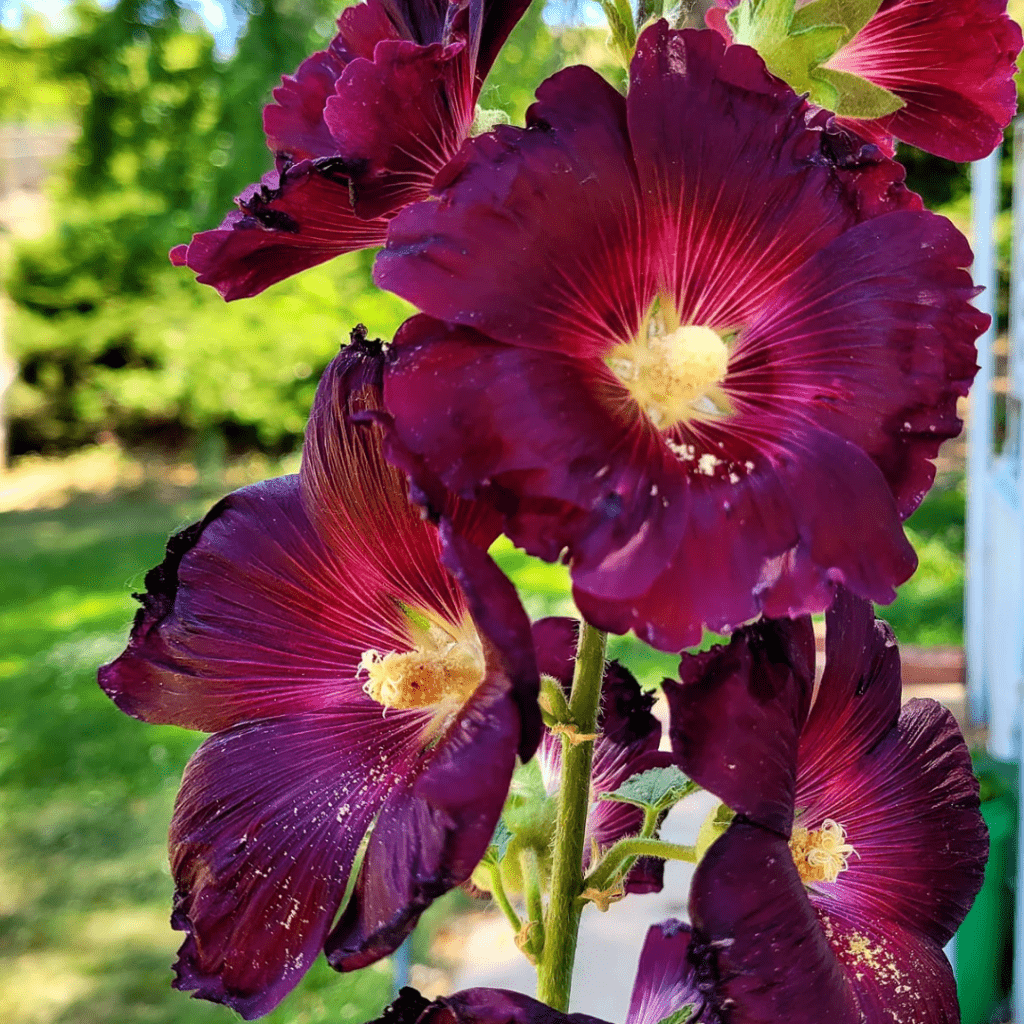Design a Cottage Garden
What Is Included in This Post:
Designing a Controlled Mess
Keeping Control Over a Cottage Garden
Choosing Plants for a Cottage Garden
Finishing Touches for Cottage Gardens
Cottage gardens are informal, fun, whimsical, colorful, beautiful, and practical. They are filled with native flowers, vegetables, herbs, bulbs, annuals, perennials, shrubs, and climbers. They provide dimension and structure to garden spaces and a safe haven for local pollinators. The best part is that cottage gardens are very much alive and they change year after year on their own if you allow them to do their own thing. With a few bulbs, seeds, and patience, you can design a cottage garden that will fill out your garden spaces naturally and beautifully.
While there are no rules to cottage gardening, you can follow these helpful guidelines when you begin to design a cottage garden.
Let’s learn more about cottage gardens!
This is a pinnable post. Tap or hover over any image in this post to pin to your Pinterest Boards.

Designing a Controlled Mess
Cottage gardens have the appeal of having a lack of design, but not neglect. You are basically designing a setup to guide a living garden to spread and thrive in a controlled way. Do not restrict what the plants naturally want to do.
Plants are living things and they know what they want and need. I once watched a garden over a span of four years do its own thing. I soon discovered that they move and migrate on their own. For instance, the tulips were planted in a partially shaded area with just a few bulbs in the ground. The spearmint was planted in a nice sunny spot, but in a very constricted area. Mint plants love to have their space and they will do anything to get it!
Therefore, over a span of four years, the spearmint moved out of their constricted area and migrated to an expanded patch with more space. While they seemed quite happy doing this, I still had complete control and limited just how far I wanted them to migrate.
The tulips then decided to move to the new sunny spot and kicked out the remaining spearmint plants and began to fill out beautifully in their new sunny spot the spearmint once occupied. Tulips multiply and move around in the garden on their own. While you can still have control over where and how they migrate, allowing them to settle in a bed they love will make them thrive and grow strong and beautiful. Every few years, you will need to separate them and place them in new beds around the cottage garden.
What I learned
This is just an example of how plants move around on their own as many plants love to migrate. Allowing plants to migrate and move around is an example of designing a controlled mess, which makes up a gorgeous cottage garden. Plants will naturally blend together mixing and sharing their many textures, colors, and fragrances. Cottage gardens are magical with their own whimsical ebb and flow!
- Cottage gardens have the appeal of having a lack of design, but not neglect.
- Allow plants to migrate and spread and mix together while maintaining control.
- Cottage gardens are magical with their own whimsical ebb and flow!
Keeping Control Over a Cottage Garden
Not all plants are created equal. Don’t let their sweet fragrances fool you as some plants are thugs in the garden. They will steal spaces and choke out their neighbors if not managed well. Some will throw their seeds everywhere to claim the whole garden as their own. These self-sowers will need to be well-controlled!
You will need to divide perennials that can quickly become too crowded in a garden bed or they will all die out from lack of nutrition and space to thrive. That is to say, tulips, bearded irises, mint, or any other bulbs and rhizomes plants will quickly multiply from underground and will need to be dug up and divided.
Meanwhile, you will also need to prune and dehead some of these plants to help keep them healthy and happy as well as prevent disease buildup in the soil. Do not allow spent blooms and pruned stems to occupy and rot in the soil. Remove all dead and spent blooms and stems from the garden completely.
- Control self-sowing plants before they take up the whole garden.
- Divide up all bulbs and rhizomes every few years to prevent crowding and competition for nutrition in the garden beds.
- Regularly prune and dehead spent stems and blooms and remove them from the garden completely to prevent the spread of disease.
Choosing Plants for a Cottage Garden
Types of Plants for Cottage Gardens
Most importantly, cottage gardens do best when you plant with plants that are native to your area. Plant a mixture of low and tall plants for visual effect and dimension and intertwine them in various areas of the garden.
Anchor plants: Anchor plants are plants that are anchored to the garden in one space and stay put. They do not self-seed or migrate anywhere. They provide beauty and a sense of consistency in the garden. These types of plants are floral bushes and ornamental trees like roses, lilacs, lavender, dogwood, redbuds, magnolia, cherry blossoms, etc.
Climbers: Climbers provide height and dimension in the cottage garden. Place them along the backside of the cottage garden to grow and climb up fences, walls, or surrounding buildings like the side of the home or sheds. You can even place them in the center of the garden to grow and climb up an obelisk. Some beautiful cottage floral climbers can include wisteria, roses, clematis, star jasmine, honeysuckle, hydrangea, sweet pea, passion flower, Virginia creeper, crossvine, morning glory, black-eyed Susan, etc.
Self-Sowers: Planting floral self-sowers in the cottage garden is a very easy and cheap way of filling out your garden beds quickly. Just be prepared to control them to keep them from becoming out of control. Some self-sowing cottage flowers can include zinnias, borage, cosmos, echinacea, columbine, cornflower, larkspur, marigold, calendula, pansy, alyssum, daisy, asters, petunia, lupine, etc.
Migrants: Migrants in the cottage garden are another easy and cheap way to help quickly fill up the garden beds. These plants require regular dividing and spreading out in other garden beds or spaces as they multiply on their own quickly. These can include tulips, bearded irises, hostas, daylily, ferns, peonies, yarrow, etc.
Finishing Touches for Cottage Gardens
Add paths and structure to the cottage garden with traditional materials like brick, stone, gravel, or dirt pathways and tall garden obelisks. Add finishing touches to the design of the cottage garden by fixating certain areas with small fences, water features, bird baths, old rockers, trellises, antiques, and vine-covered arbors.
In this paragraph, I will discuss the finishing touches of cottage gardening. Likewise, know that when it comes to how you want to design a cottage garden, remember there are no rules. You do not have to add everything at one time. The beauty of cottage gardening is that it changes year after year. Plants migrate and propagate, new plants can be added, new features and structures can be added or replaced each year, and you can design them how you want. Cottage gardening is a lifestyle that changes from season to season. Allow your cottage garden to grow with you as you learn how to grow a beautiful mess of your very own.
- Add natural elements and pathways using brick, stone, gravel, or dirt.
- Construct structural dimensions in the garden with garden obelisks, fences, trellises, and vine-covered arbors.
- Integrate garden features like water fountains, bird baths, rockers, lawn ornaments, and antiques.
Summary
I hope I have inspired you to grow your own beautiful cottage garden.
If you were encouraged by this post, I invite you to check out my FREE Self-Sufficiency Academy for fun free printables, planners, and charts.
ENTER MY FREE SELF-SUFFICIENCY ACADEMY HERE
I invite you to check out some more of my posts!
Hollyhocks: How to Grow and Care for Hollyhocks
Bearded Irises: How to Grow and Care for Bearded Irises
Roses: How to Grow and Care for Roses
Blessings,
The Off Grid Barefoot Girl




